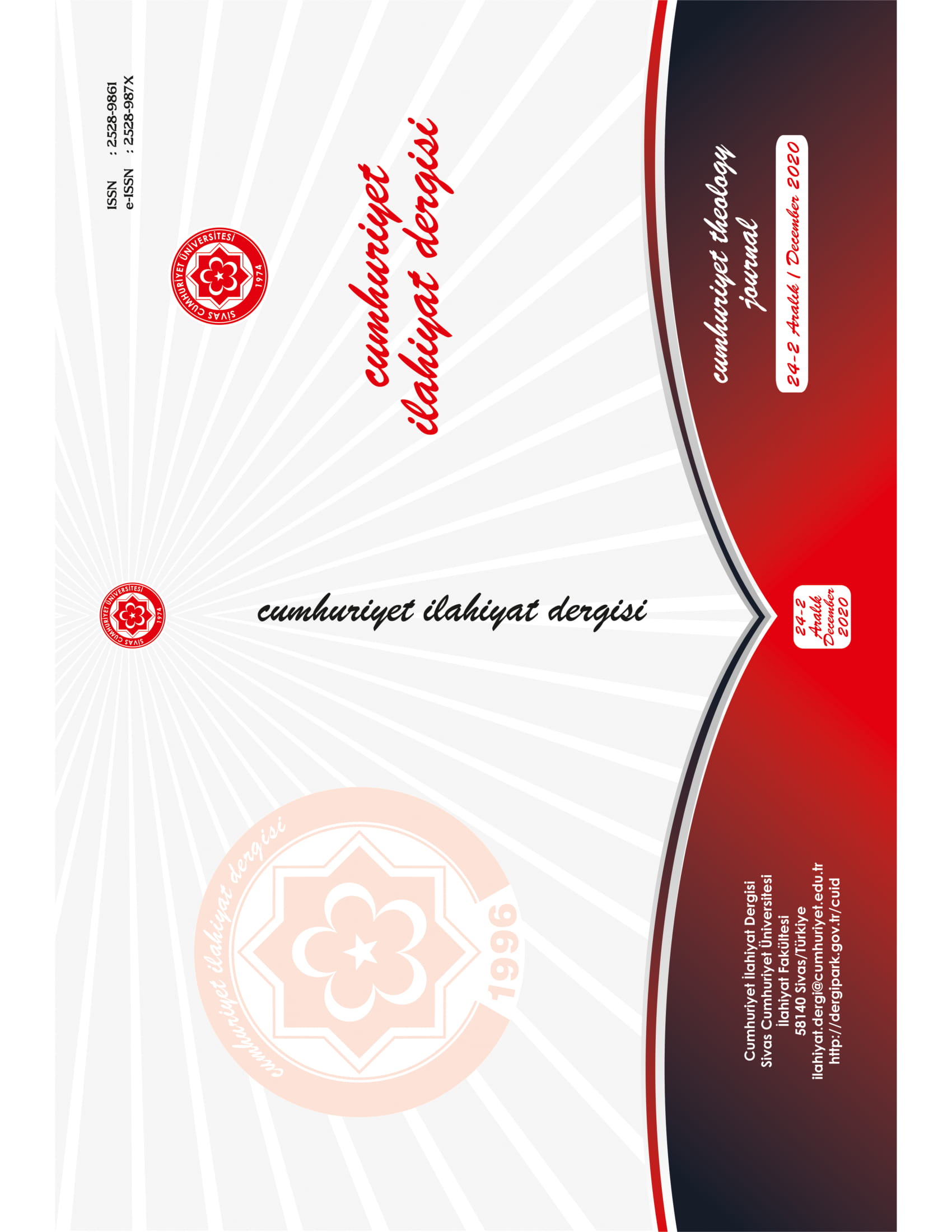Dindarlık, Empati ve Sürücü Davranışları Arasındaki İlişkiler
The Relationships Between Religiosity, Empathy, and Driver Behaviors
Author(s): Sezai KorkmazSubject(s): Psychology, Theology and Religion, Behaviorism
Published by: Cumhuriyet Üniversitesi İlahyat Fakültesi
Keywords: Psychology of Religion; Religiosity; Traffic Rules; Driver Behaviors; Empathy;
Summary/Abstract: There are basic traffic rules as well as rules that must be followed personally and socially. Depending on the drivers, positive and negative behaviors occur in traffic. Because of negative behaviors in traffic, there are loss of life and property, as well as moral/psychological prob-lems. It is seen that moral behavior, empathy and religious values are important in traffic. There are many studies that reveal the relationship between religiousness, traffic behaviors, and empathy. It can be predicted that there are relationships between religiosity, driver behav-ior and empathy. Moreover, according to studies based on correlation relations, it can be stated that those with high religiousness, inner religiosity and empathy scores are more careful and respectful in traffic. Empathic tendencies and religious values might lead to be more civilized, more respectful, and to comply with the traffic rules. The aim of the current study was to analyze the relationship between religiosity, traffic behavior, and empathy. Under the guidance of literature, the following hypotheses were tested: There is a differentiation in traffic errors and violations and positive driver behavior by gender. Positive driver behaviors and traffic errors and violations differ according to the accident rate. There is a statistically positive rela-tionship between religiousness and empathy and positive driver behavior. There is a negative relationship between religiousness and traffic errors and violations. Religiousness predicts empathetic tendencies and positive driver behavior. Empathy mediates in the relationship between religiosity and positive driver behavior. Research methods of the current study were documentation and relational survey method. Data collection was made by means of various social media and messengers etc. A total of 201 volunteers participated in the current study. According to gender, 104 (51.7%) of the partici-pants were men and 97 (48.3%) were women. The age range of the sample varied between 20 and 58 and the average age is 33. 199 (99%) of the participants had a driver’s license, 2 (1%) had not any driver’s license. In terms of accident rates, 100 of the participants (49.8%) had an accident, 101 of them (50.2%) never had an accident. The data was analyzed using SPSS and AMOS program. Descriptive analysis, t-test, Pearson correlation test, multiple regression based on structural equation model, intermediate variable analysis, and reliability analysis tests were performed in the analyzes. The questionnaire of the study consisted of the personal infor-mation form and the consent form created by the researcher, the driver behavior scale devel-oped by Reason et al., adapted to Turkish by Sümer et al., the positive driver behavior scale developed by Özkan and Lajunen, the empathic tendency scale developed by Dökmen and the religiousness scale developed by Ayten. According to gender, there is a statistically significant differentiation in terms of traffic errors and violations (t (199) = 4.731; p <0.05) and positive driver behaviors (t (170.9) = - 3.190; p <0.05). Based on the average of errors and violations by gender, men (m = 2.02) make more errors and violations than women (m = 1.72). In terms of positive driver behavior, women (m = 4.05) show more positive behavior than men (m = 3.78). According to the data in Table 2, there is a statistically significant difference in errors and violations, according to accident rates (t (199) = - 3.382; p <0.05), while no statistically significant differences are observed in positive driver behaviors. Therefore, those who had an accident (m = 1.99) make more mistakes and violations than those who had no accident (m = 1.77). A statistically significant correlation exists between religiousness and empathic tendency (r (201) =, 265; p <0.01). Religiousness and empathic tendency positively affect each other. However, there is no significant relationship between religiousness and other variables. While there is a significant and positive (r (201) =, 378; p <0.01) relationship between the empathic tendency and positive driver behavior, there is a significant and negative relationship between empathic tendency and traffic errors and violations (r (201) = -, 200; p <0.01). Regarding the findings of the regression analysis, religiosi-ty predicts the empathic tendency (β =, 265; p <0.001). Religiosity estimates .265 of the em-pathic tendency. Religiousness has no effect on predicting driver behavior. The study reveals that religiousness does not have a regression relationship with positive driver behaviors (β =, 110; p> 0.001), and errors and violations (β = -, 120; p> 0.001). Regarding the regression weights according to the structural equation model, in terms of relationships between varia-bles, it is not statistically eligible to analyze the mediator.
Journal: Cumhuriyet İlahiyat Dergisi
- Issue Year: 24/2020
- Issue No: 2
- Page Range: 631-653
- Page Count: 23
- Language: Turkish

